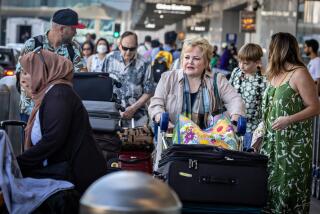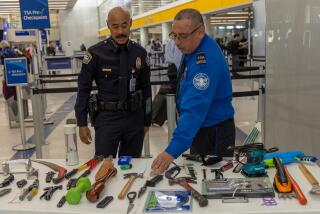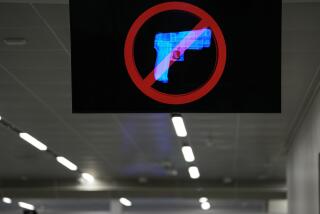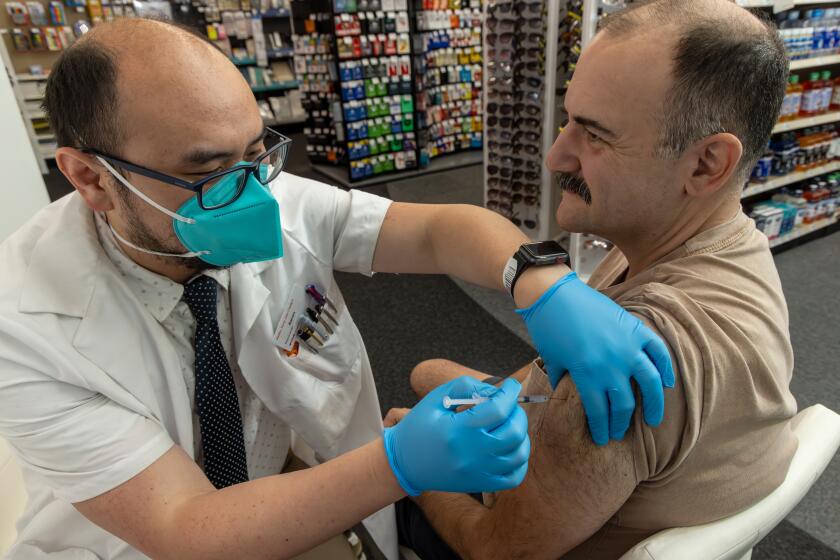Radiation study: Don’t fear X-rays from airport scanners
- Share via
The Transportation Security Administration began installing full-body scanners in American airports shortly after Umar Farouk Abdulmutallab hid explosives in his underwear in a thwarted attempt to blow up a Northwest Airlines jet on its way from Amsterdam to Detroit.
Ever since, passengers have worried about the effects of one type of these scanners -- backscatter X-ray scanners -- may pose to their privacy and health.
As for privacy concerns, sure: a TSA screener somewhere may be able to see a fuzzed-out image of your body the next time you walk through security on your way to a flight.
But where your health is concerned, according to an article published online Monday in the Archives of Internal Medicine, there’s “no significant threat” from backscatter X-ray scanners. Even though they use ionizing radiation, which is known to cause cancer, the doses are so low -- less than 1% of the additional radiation a person gets from flying in an airplane in the first place, and about the same received through 3 to 9 minutes of daily life on the ground -- that only a handful of cancer cases are likely to result directly from scanner use.
“If individuals feel vulnerable and are worried about the radiation emitted by the scans, they might reconsider flying altogether since most of the small, but real, radiation risk they will receive will come from the flight and not from the exceedingly small exposures from the scans,” wrote the authors, Pratik Mehta of UC Berkeley and Dr. Rebecca Smith-Bindman of UC San Francisco.
Here’s some idea of the risk, as calculated by Mehta and Smith-Bindman:
All fliers: Among the estimated 100 million passengers who take 750 million plane rides per year, exposure to backscatter scans will produce six additional cancers over the lifetime of the individuals. To put that in context, the authors projected that 40 million cancers would develop among this population anyway, without the scanner exposure.
Frequent fliers: Among the 1 million frequent fliers who take 10 six-hour plane trips per week for a year, there would be four additional cancers. 400,000 cancers would occur in those fliers anyway.
Frequent fliers who are 5-year-old girls: The authors looked at 5-year-old girls because children are known to be more sensitive to radiation risk, and because studying girls allowed them to use existing models to look at breast cancer risk. There would be one additional case of breast cancer for every 2 million girls who travel one round trip per week, the authors estimated. Two hundred and fifty thousand breast cancers would be expected to occur in these girls over the course of their lifetimes.
Mehta and Smith-Bindman also calculated that one would need to undergo 50 airport backscatter scans to equal the exposure from a dental X-ray; 1,000 to equal the exposure from a chest radiograph; 4,000 to equal a mammogram and 200,000 to equal a CT scan.
Still, they wrote, the TSA should reverse its stand and approve independent testing of the devices that would ensure they function properly and are used correctly. There are 486 of such scanners in use in 78 U.S. airports. By the end of 2011, there will be around 1,000.
RELATED:







